IT departments are hemorrhaging resources on a crisis that shouldn’t exist. Across organizations, teams are spending countless hours scrambling to address software compliance gaps, paying emergency audit penalties and making unplanned license purchases just to abide by evolving vendor policies. These activities drain time and budget away from strategic initiatives and new capabilities that could drive business value.
The financial impact is staggering: recent industry research reveals that 27% of organizations now spend more than $500,000 annually just resolving software license non-compliance issues. An additional 25% spend between $100,000 and $500,000 on these same problems. This is essentially a hidden tax on IT operations. It produces no business value while diverting resources from innovation.
What we’re witnessing isn’t isolated incidents of poor license management, but a systemic breakdown in how traditional IT Asset Management (ITAM) approaches the realities of modern software licensing. Understanding why this breakdown is happening—and what ITAM must do to address this issue, including their ongoing convergence with FinOps—is critical for any organization serious about controlling software costs.
Why Traditional ITAM is Breaking Down
This breakdown didn’t happen overnight. The foundation of traditional ITAM was built for a simpler world—one where software licenses were relatively static, deployment environments were predictable, and vendor terms changed infrequently. That world no longer exists, and the gap between old methods and new realities is widening fast.
Today’s complexity is overwhelming traditional ITAM approaches. A recent study of 500 ITAM and Software Asset Management professionals, conducted jointly by Azul and the ITAM Forum, highlighted how 3 out of 10 organizations struggle with tracking software usage across different environments. The challenge reveals a mismatch between tracking methods designed for centralized deployments and the hybrid, distributed, and often dynamic nature of modern IT infrastructure. AI and SaaS are good examples.
The vendor landscape has become equally unpredictable. Major enterprise software vendors change licensing and pricing policies with unprecedented frequency—sometimes multiple times per year. VMware’s shift to subscription-based licensing and subsequent pricing changes following its Broadcom acquisition exemplify this trend. Each change forces organizations to reevaluate their compliance posture. That often requires new monitoring systems, internal audits and legal reviews. When licensing terms shift this rapidly, the traditional ITAM cadence of periodic assessments and vendor relationship management simply can’t keep pace. What’s required is a much more “real time” fluid and constant global view on “in use” licensing. Something which, without very specific technology for the vendor environment, is very challenging to visualize.
Also, most concerning is the resource mismatch fueling this crisis. While 74% of organizations handle license discovery and software audits primarily or entirely in-house, they’re doing so with teams and tools designed for yesterday’s challenges. Add to this a constrained ITAM hiring market with limited or no hiring. The result is a dangerous disconnect. Organizations take on increasingly complex compliance responsibilities while lacking the automation, expertise and resource scale to execute them properly in today’s environment.
The Oracle Java Wake-Up Call
The challenges facing modern ITAM become crystal clear when examining what’s happened with enterprise Java licensing over the past few years. The study found that 73% of organizations experienced an Oracle Java audit within the last three years. 96% express concern about evolving pricing and licensing policies in this space.
What makes this particularly concerning is the market response: 79% of organizations have either already migrated away from Oracle Java, are actively doing so or are planning such migrations to open-source JDK alternatives. This represents one of the largest enterprise software migrations in recent memory. It’s driven not by technical limitations but by licensing complexity, ongoing audit frustration and cost concerns.
This situation illustrates three critical trends reshaping software licensing across the industry. First, the shift toward employee-based pricing models that charge based on the total workforce rather than actual usage. If the vendor can’t get audit data from an organization they’ll license from a metric they can get data around. All that’s needed is a confirmation of a single license in use — independent of who downloaded it and how they are using it — which is why so many vendor solutions “dial home” once installed. Second, the accelerating pace of licensing changes forces organizations into constant compliance vigilance for both licenses that are used as well as the removal of licenses that aren’t used. Third, the growing willingness of enterprises to undertake significant transitions to alternative solutions rather than accept unfavorable licensing terms.
These trends extend far beyond any single vendor or technology. They represent a fundamental shift in how software vendors monetize their products and how enterprises must respond to protect their interests.
The Evolution Imperative: What ITAM Must Become
The organizations successfully navigating this new landscape are transforming what ITAM means entirely, going far beyond traditional approaches.
The most fundamental shift is moving from reactive compliance to proactive risk management. Instead of responding to audit requests, leading organizations are building continuous monitoring capabilities. These provide real-time visibility into licensing exposure. This means moving beyond point-in-time assessments to always-on systems that track usage, predict licensing needs and flag new installations. Where possible, they also remediate potential compliance risks before they become expensive problems.
Equally important is how the role of ITAM professionals is expanding from vendor relationship management to strategic business partnership. In organizations spending hundreds of thousands annually on compliance issues, ITAM teams become trusted advisors who influence technology architecture decisions, individual vendor selection criteria, technology stack selection and even business strategy. Beyond tracking existing assets, they actively shape what software and applications the organization should have.
This evolution requires embracing the rising complexity of the evolution imperative rather than fighting it. The hybrid, multi-cloud, dynamic scale, remote-work reality isn’t going away. Neither is the trend toward more frequent vendor policy changes. ITAM professionals who thrive in this environment build flexibility and adaptability into their processes rather than hoping for a return to simpler times.
Research confirms that the cost of standing still is measured in hundreds of thousands of dollars annually. For ITAM professionals, the choice is clear: evolve the approach or continue paying the hidden tax of outdated compliance strategies.
The organizations that recognize this inflection point and adapt accordingly will transform software asset management from a compliance burden into a competitive advantage.

